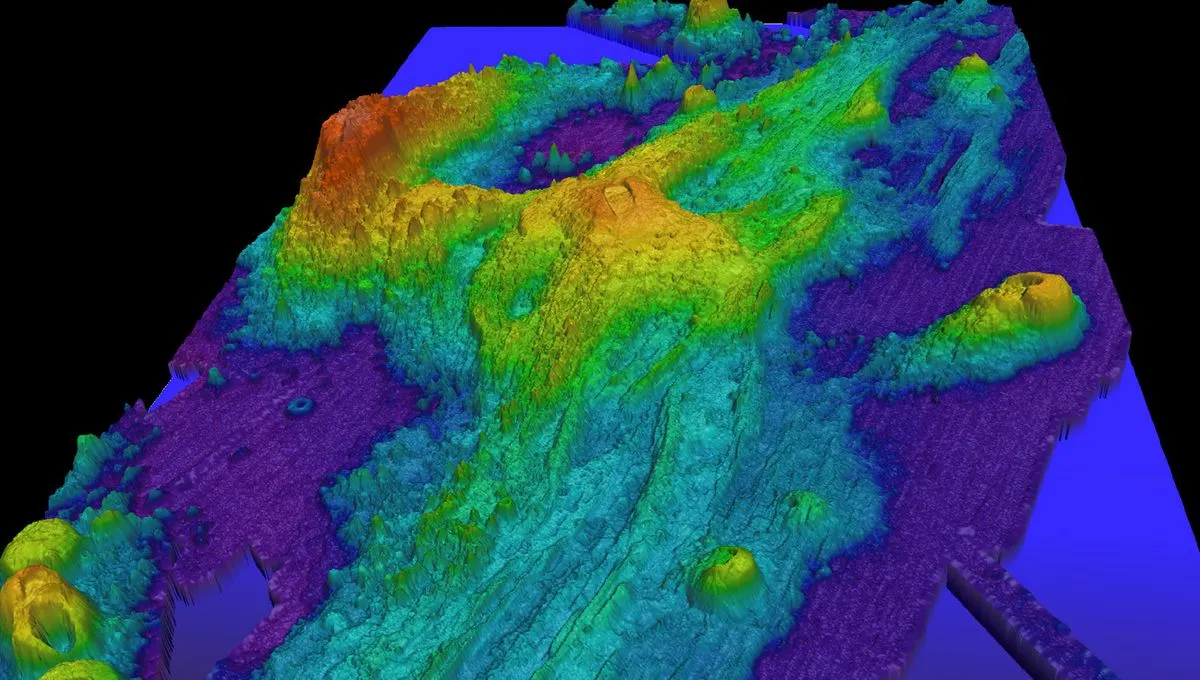
When discussing notable volcanoes, Axial Seamount might not be the first name that comes to mind—yet it is one of the most active volcanoes in the Pacific Northwest. Situated a staggering 480 kilometers (300 miles) west of the continental United States and approximately 1.5 kilometers (4900 feet) beneath the ocean’s surface, Axial Seamount remains largely unknown to the general public. As an underwater volcano, it stands as the youngest member of the Cobb–Eickelberg Seamount chain, formed due to tectonic movements over a geological hotspot, where the Earth’s mantle is significantly hotter than its surroundings.
Axial Seamount is not just an isolated volcanic formation; it is strategically positioned atop the Juan de Fuca Ridge, where the Pacific and Juan de Fuca tectonic plates converge. This unique location is pivotal, as the plates are currently moving apart, with the Juan de Fuca plate subducting beneath the North American plate. This geological activity churns up new seafloor from the magma below the lithosphere, making Axial Seamount a focal point of interest for oceanographers.
Professor William Wilcock from the University of Washington School of Oceanography describes Axial Seamount as a “genuine hotspot.” Rising roughly 3600 feet from the seafloor, it features a large caldera—an enormous crater formed by volcanic eruptions and the subsequent collapse of the magma chamber. Such a combination of geological features, especially on a mid-ocean ridge, is relatively rare.
Even when not actively erupting, Axial Seamount is a hub of activity. The region is home to hydrothermal vents, reaching temperatures exceeding 370°C (700°F), creating one of the most extreme environments on Earth. Despite these harsh conditions, life flourishes here. Microbes thrive on dissolved volcanic gases, while tubeworms, crabs, and even octopuses rely on these microscopic organisms for sustenance.
Deborah Kelley, another professor at the University of Washington, notes that the vent fields transform this underwater volcano into an “oasis of life.” Interestingly, while the chemistry of these vents is similar, the microbial life varies significantly, resembling “little islands with distinctive communities.”
Despite its ecological significance and unique features, Axial Seamount has recently garnered headlines for a different reason: warnings of a potential eruption. At the end of 2024, during the annual American Geophysical Union conference, researchers announced that Axial Seamount appeared to be on the brink of an eruption. Geophysicist William Chadwick from Oregon State University stated, “Axial Seamount has suddenly woken up!”
Current research suggests that the volcano is showing signs of inflation similar to those observed before its previous eruption in 2015. Predictions indicate that the eruption window could be between July 2024 and the end of 2025. While this may sound alarming, it's crucial to understand that predicting volcanic eruptions is not an exact science. Chadwick emphasized that forecasting eruptions more than a few hours in advance is a rarity.
Axial Seamount holds the title of the “most well-instrumented submarine volcano on the planet.” Mark Zumberge, a geophysicist at the Scripps Institution of Oceanography, remarked on the volcano's advanced monitoring capabilities. Recent data indicates that the surface of Axial Seamount has swelled significantly, suggesting that the magma could soon reach a critical point.
Wilcock highlights the importance of this inflation as a potential predictor of eruptions. “If the inflation hypothesis is correct, it’s exciting for us, as it has already inflated to levels seen before previous eruptions,” he explained. However, the situation remains complex; while inflation is high, earthquake activity near the volcano has not increased correspondingly, which is often a key indicator of an impending eruption.
If Axial Seamount does erupt, the impact on human life will be minimal. As Chadwick pointed out, “People’s lives aren’t in the equation.” Unlike terrestrial eruptions, which can cause tsunamis or major earthquakes, an eruption at Axial Seamount is unlikely to pose any direct threat to populated areas. Instead, it presents a unique opportunity for scientists: “Three-quarters of all volcanic activity on Earth occurs at mid-ocean spreading centers,” Kelley noted.
As researchers prepare for the possibility of witnessing an underwater eruption for the first time, they acknowledge the wealth of knowledge that could emerge from such an event. Until the eruption occurs, the scientific community will continue to monitor Axial Seamount closely, aiming to unravel the mysteries that lie beneath the ocean's surface.